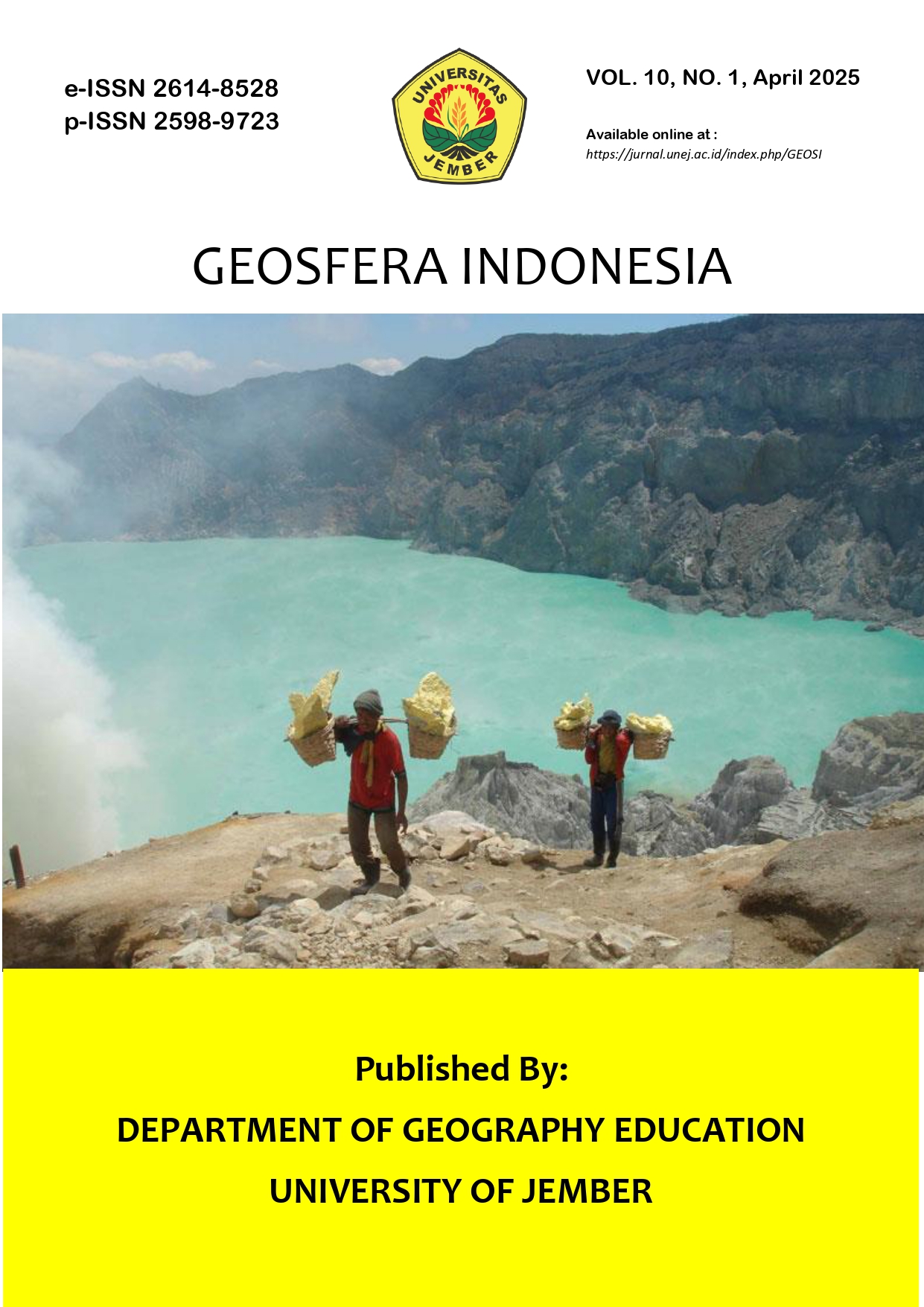Evaluation of Waste Management in the Bromo Tengger Semeru National Park Tourism Area: A Case Study of the Bromo Sand Sea
DOI:
https://doi.org/10.19184/geosi.v10i1.45780Keywords:
evaluation, waste management, tourist area, the bromo sand seaAbstract
Effective waste management is one of the key efforts to achieve sustainable tourism development. The purpose of this study was to examine the waste management model in the Bromo Tengger Semeru National Park area, particularly in the Sea of Sand. The results of this study are expected to provide normative benefits to all stakeholders managing Bromo as a tourist destination and serve as evaluation material for addressing waste issues in the Sea of Sand area. The study was conducted in May 2022 using a qualitative method with a descriptive approach. Data collection methods included observation, in-depth interviews, and documentation. The sampling technique used in this research was purposive sampling, or criterion-based selection, considering the validity of information provided by specific respondents with relevant expertise. The primary informants consisted of the management of the Bromo Tengger Semeru National Park, government officials, guides, and the local community. The research findings indicate that waste management in the Bromo destination area is still suboptimal. Existing facilities are insufficiently representative, and utilities related to solid waste need further development. Furthermore, the coordination of waste management efforts has not been effectively implemented. Recommended measures for stakeholders in Bromo Tengger Semeru National Park to improve waste management include: (1) developing waste management systems; (2) restricting the number of visitors to Bromo; (3) enhancing tourism utilities, such as environmentally-conscious signage systems; and (4) developing and maintaining tourist facilities and infrastructure.
Downloads
Downloads
Published
How to Cite
Issue
Section
License
Copyright (c) 2025 Geosfera Indonesia and Department of Geography Education, University of Jember

This work is licensed under a Creative Commons Attribution-ShareAlike 4.0 International License.




